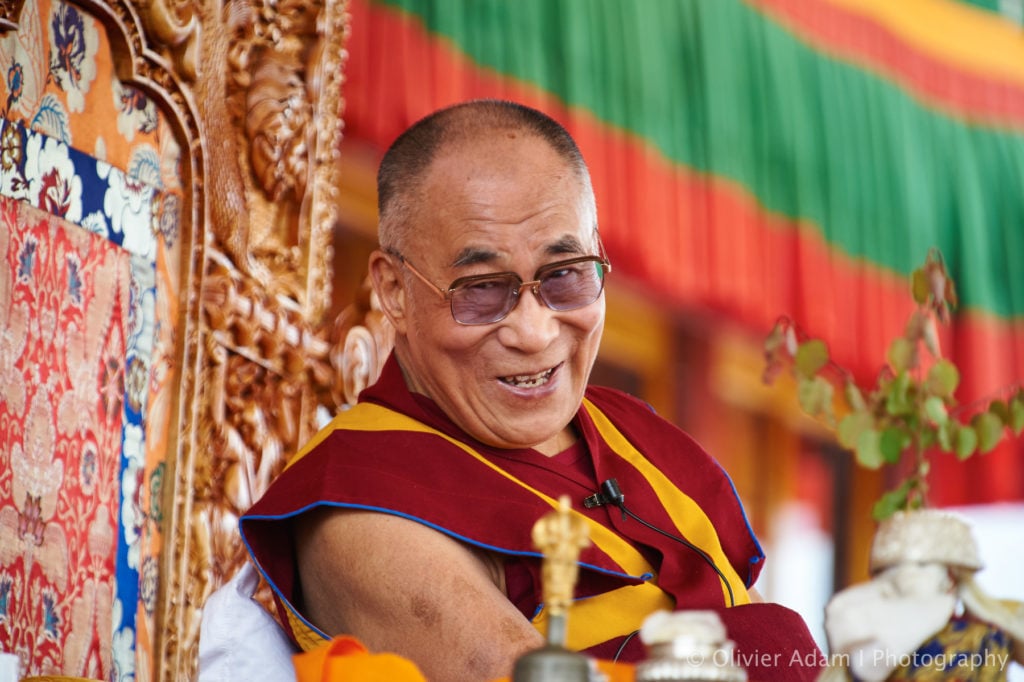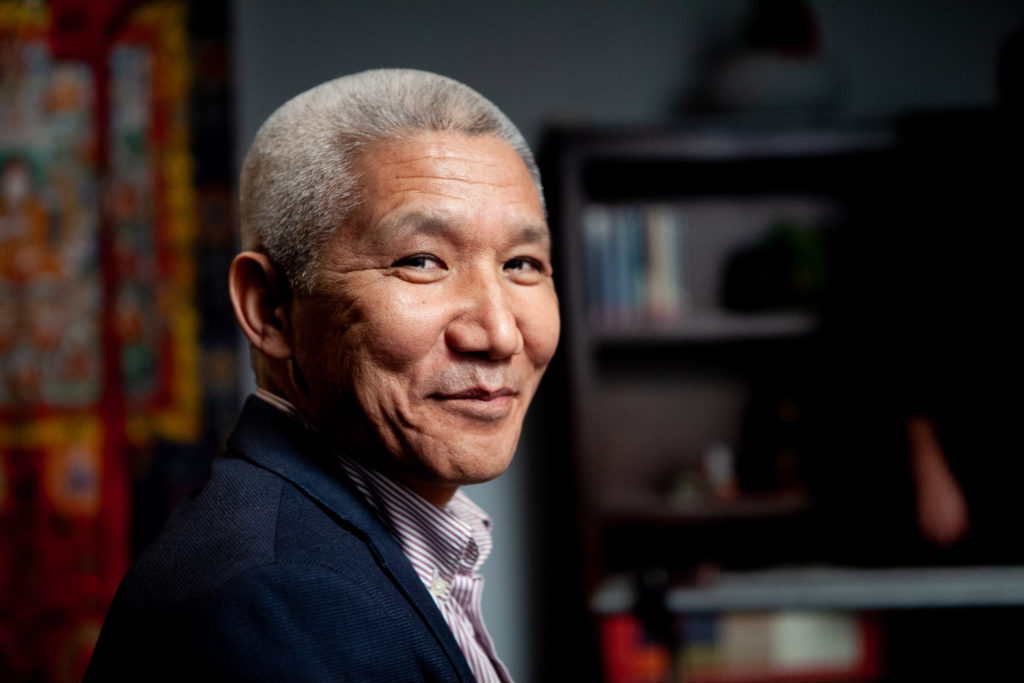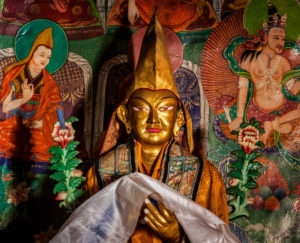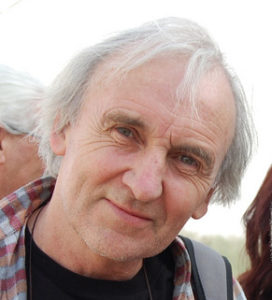
The Library of Tibetan Classics
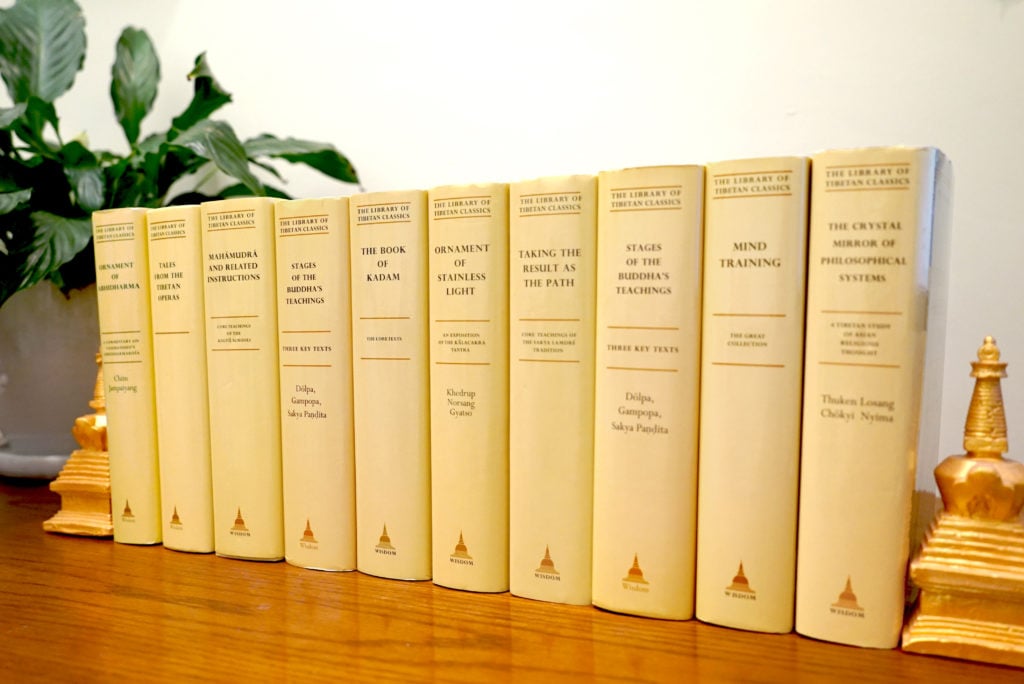
“I am very happy to welcome the initiatives of the Institute of Tibetan Classics, especially its ambitious Library of Tibetan Classics. This collection will help make Tibet’s classical thought truly a world heritage, an intellectual and spiritual resource open to all.”—His Holiness the Dalai Lama
When Thupten Jinpa first approached Wisdom Publications to collaborate with him and his Institute of Tibetan Classics in Montreal, Canada on the monumental Library of Tibetan Classics, we were honored to accept. The texts in this series have been selected in close consultation with preeminent lineage holders and with senior Tibetan scholars, especially His Holiness the Dalai Lama.
In every way, the series has been designed with a broad audience in mind—while being “…of great value to scholars, the translations are accessible to nonspecialists as well, and thus should allow a wide audience to gain access to the treasures of the Tibetan tradition” (Georges Dreyfus, Williams College). The series includes the works of many great Tibetan teachers, philosophers, scholars, and practitioners, representing all major Tibetan schools and traditions. It is our privilege to play a part in the preservation and sharing of their invaluable writings, with their ability to teach, enrich, and inspire. With more than a dozen volumes published and the rest underway, we are in the midst of an extraordinary journey, and we would like to invite you to join us. Click here to learn more about becoming a supporter of the series.
Thupten Jinpa photo by Tad Fettig.
Explore the Series
COMING IN AUGUST
Buddhist Epistemology in the Geluk School: Three Key Texts
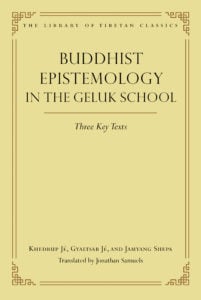 Faced with Buddhism’s radical interdependence, one might ask, “If everything is relative, how can I be certain of anything?” Here, the descendents of Tsongkhapa plumb the nature of knowing and the tools of reasoning to come up with an answer. This volume includes translations of three separate Tibetan works by iconic figures in the Geluk school of Buddhism. The first work, Banisher of Ignorance, is by Khedrup Gelek Palsang (1385–1438), and the second, On Preclusion and Relationship, is by Gyaltsab Darma Rinchen (1364–1432). The authors—popularly known as Khedrup Jé and Gyaltsab Jé—were the foremost disciples of the Geluk-school founder, Tsongkhapa Losang Drakpa (1357–1419). The third text, Mighty Pramāṇa Sun, is a commentary on Candrakīrti’s Clear Words (Prasannapadā) by the First Jamyang Shepa (1648–1721). These works concern themselves primarily with the Buddhist theory of knowledge—the means by which we are able to know things and how we can be certain of that knowledge.
Faced with Buddhism’s radical interdependence, one might ask, “If everything is relative, how can I be certain of anything?” Here, the descendents of Tsongkhapa plumb the nature of knowing and the tools of reasoning to come up with an answer. This volume includes translations of three separate Tibetan works by iconic figures in the Geluk school of Buddhism. The first work, Banisher of Ignorance, is by Khedrup Gelek Palsang (1385–1438), and the second, On Preclusion and Relationship, is by Gyaltsab Darma Rinchen (1364–1432). The authors—popularly known as Khedrup Jé and Gyaltsab Jé—were the foremost disciples of the Geluk-school founder, Tsongkhapa Losang Drakpa (1357–1419). The third text, Mighty Pramāṇa Sun, is a commentary on Candrakīrti’s Clear Words (Prasannapadā) by the First Jamyang Shepa (1648–1721). These works concern themselves primarily with the Buddhist theory of knowledge—the means by which we are able to know things and how we can be certain of that knowledge.
LATEST RELEASE
The Tradition of Everlasting Bön: Five Key Texts on Scripture, Tantra, and the Great Perfection
This authoritative annotated translation of five key texts of Everlasting (Yungdrung) Bön by Marc des Jardins opens up a relatively unknown tradition, which since the arrival of Buddhism in Tibet has undergone great transformations in its philosophy, doctrinal teachings, and meditative practices. The texts each represent an important aspect of the tradition. The first text, by Drogön Azha Lodrö Gyaltsen (1198–1263), presents the grounds and paths of the Greater Vehicle of the Bön tradition and represents the philosophical ideology of its teachings based on the scriptures contained in the Bön canon. The second text is a short root tantra attributed to revealed teachings from Kuntu Zangpo, the personification of the unconditioned absolute. The third text is a commentary on this root tantra attributed to Drenpa Namkha (fl. eighth century), a Bönpo sage contemporary with Padmasambhava. The fourth text, by Nyamé Sherap Gyaltsen (1356–1415), presents a general exposition of the tantric system according to Yungdrung Bön. The final text, by Drutön Gyalwa Yungdrung (1242–90), pertains to the oral instructions on the meditation practices of Bön, especially on the cycle of practices associated with experiencing the nature of the mind, the Great Perfection systems. All five texts have been selected by the late H. H. Menri Trizin Rinpoché, Lungtok Tenpai Nyima (1927–2017), the thirty-third abbot of Menri Monastery, the central institution of the Yungdrung Bön school.
Stages of the Path and the Oral Transmission: Selected Teachings of the Geluk School
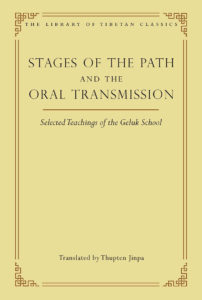 A major contribution to the literature on Buddhist practice according to the Geluk school of Tibetan Buddhism from its foremost interpreter.
A major contribution to the literature on Buddhist practice according to the Geluk school of Tibetan Buddhism from its foremost interpreter.
Although it was the last major school to emerge in the Tibetan Buddhist tradition, the Geluk school has left an indelible mark on Buddhist thought and practice. The intellectual and spiritual brilliance of its founder, the great Tsongkhapa (1357–1419), has inspired generations of scholars and tantric yogis to place him at the heart of their daily meditative practice. The Geluk tradition’s close ties to the Dalai Lamas have also afforded it an outsized influence in all aspects of Tibetan life for centuries. At its peak, its combined monasteries boasted a population in the tens of thousands, and its sway encompassed the religious landscape of Mongolia and much of Central Asia.
This widespread religious activity fostered a rich literary tradition, and fifteen seminal works are featured here representing four genres of that tradition. The first are works on the stages of the path, or lamrim, the genre for which the Geluk is most renowned. Second are works on guru yoga, centered around the core Geluk ritual Offering to the Guru (Lama Chöpa). Third are teachings from the unique oral transmission of Geluk mahāmudrā, meditation on the nature of mind. Fourth are the “guide to the view” (tatri) instructions. The volume features well-known authors like Tsongkhapa, the First Panchen Lama, and the Fifth Dalai Lama, but also important works from lesser-known figures like Gomchen Ngawang Drakpa’s stages of the path in verse and Gyalrong Tsultrim Nyima’s extensive commentary on the Lama Chöpa that interweaves precious explanations from the Ensa Oral Tradition he received from his own teacher.
Your guide to these riches, Thupten Jinpa, maps out their historical context and spiritual significance in his extensive introduction.
A History of Buddhism in India and Tibet: An Expanded Version of the Dharma’s Origins Made by the Learned Scholar Deyu
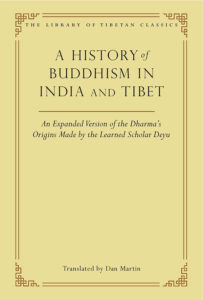 The first complete English translation of an important thirteenth-century history that sheds light on Tibet’s imperial past and on the transmission of the Buddhadharma into Central Asia.
The first complete English translation of an important thirteenth-century history that sheds light on Tibet’s imperial past and on the transmission of the Buddhadharma into Central Asia.
Translated here into English for the first time in its entirety by perhaps the foremost living expert on Tibetan histories, this engaging translation, along with its ample annotation, is a must-have for serious readers and scholars of Buddhist studies. In this history, discover the first extensive biography of the Buddha composed in the Tibetan language, along with an account of subsequent Indian Buddhist history, particularly the writing of Buddhist treatises. The story then moves to Tibet, with an emphasis on the rulers of the Tibetan empire, the translators of Buddhist texts, and the lineages that transmitted doctrine and meditative practice. It concludes with an account of the demise of the monastic order followed by a look forward to the advent of the future Buddha Maitreya.
The composer of this remarkably ecumenical Buddhist history compiled some of the most important early sources on the Tibetan imperial period preserved in his time, and his work may be the best record we have of those sources today. Dan Martin has rendered the richness of this history an accessible part of the world’s literary heritage.![]()
Illuminating the Intent: An Exposition of Candrakīrti’s Entering the Middle Way
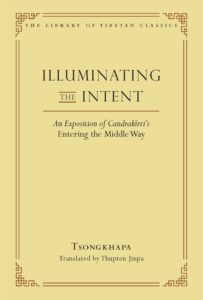 This work is perhaps the most influential explanation of Candrakirti’s seventh-century classic Entering the Middle Way (Madhyamakavatara).
This work is perhaps the most influential explanation of Candrakirti’s seventh-century classic Entering the Middle Way (Madhyamakavatara).
Written as a supplement to Nagarjuna’s Fundamental Verses on the Middle Way, Candrakirti’s text integrates the central insight of Nagarjuna’s thought—the rejection of any metaphysical notion of intrinsic existence—with the well-known Mahayana framework of the ten levels of the bodhisattva, and it became the most studied presentation of Madhyamaka thought in Tibet.
Completed the year before the author’s death, Tsongkhapa’s exposition of Candrakirti’s text is recognized by the Tibetan tradition as the final standpoint of Tsongkhapa on many philosophical questions, particularly the clear distinctions it draws between the standpoints of the Madhyamaka and Cittamatra schools.
Written in exemplary Tibetan, Tsongkhapa’s work presents a wonderful marriage of rigorous Madhyamaka philosophical analysis with a detailed and subtle account of the progressively advancing mental states and spiritual maturity realized by sincere Madhyamaka practitioners.
The work remains the principal textbook for the study of Indian Madhyamaka philosophy in many Tibetan monastic colleges, and it is a principal source for many Tibetan teachers seeking to convey the intricacies of Madhyamaka philosophy to non-Tibetan audiences.
Though it is often cited and well known, this is the first full translation of this key work in a Western language.
Ornament of Stainless Light: An Exposition of the Kālacakra Tantra
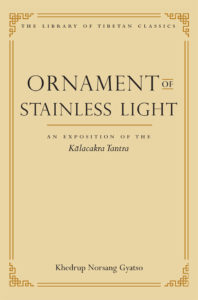 The Kālacakra, or “wheel of time,” tantra likely entered Indian Mahayana Buddhism around the tenth century. In expounding the root tantra, the Indian master Puṇḍarīka, one of the legendary Kalkī kings of the land of Shambhala, wrote his influential Stainless Light. Ornament of Stainless Light is an authoritative Tibetan exposition of this important text, composed in the fifteenth century by Khedrup Norsang Gyatso, tutor to the Second Dalai Lama.
The Kālacakra, or “wheel of time,” tantra likely entered Indian Mahayana Buddhism around the tenth century. In expounding the root tantra, the Indian master Puṇḍarīka, one of the legendary Kalkī kings of the land of Shambhala, wrote his influential Stainless Light. Ornament of Stainless Light is an authoritative Tibetan exposition of this important text, composed in the fifteenth century by Khedrup Norsang Gyatso, tutor to the Second Dalai Lama.
One of the central projects of Kālacakra literature is a detailed correlation between the human body and the external universe. In working out this complex correspondence, the Kālacakra texts present an amazingly detailed theory of cosmology and astronomy, especially about the movements of the various celestial bodies. The Kālacakra tantra is also a highly complex system of Buddhist theory and practice that employs vital bodily energies, deep meditative mental states, and a penetrative focus on subtle points within the body’s key energy conduits known as channels. Ornament of Stainless Light addresses all these topics, elaborating on the external universe, the inner world of the individual, the Kālacakra initiation rites, and the tantric stages of generation and completion, all in a highly readable English translation.
Mind Training: The Great Collection
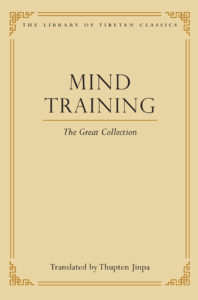 Compiled in the fifteenth century, Mind Training: The Great Collection is the earliest anthology of a special genre of Tibetan literature known as “mind training,” or lojong in Tibetan. The principal focus of these texts is the systematic cultivation of such altruistic thoughts and emotions as compassion, love, forbearance, and perseverance. The mind-training teachings are highly revered by the Tibetan people for their pragmatism and down-to-earth advice on coping with the various challenges and hardships that unavoidably characterize everyday human existence.
Compiled in the fifteenth century, Mind Training: The Great Collection is the earliest anthology of a special genre of Tibetan literature known as “mind training,” or lojong in Tibetan. The principal focus of these texts is the systematic cultivation of such altruistic thoughts and emotions as compassion, love, forbearance, and perseverance. The mind-training teachings are highly revered by the Tibetan people for their pragmatism and down-to-earth advice on coping with the various challenges and hardships that unavoidably characterize everyday human existence.
The volume contains forty-four individual texts, including the most important works of the mind training cycle, such as Serlingpa’s well-known Leveling Out All Preconceptions, Atisha’s Bodhisattva’s Jewel Garland, Langri Thangpa’s Eight Verses on Training the Mind, and Chekawa’s Seven-Point Mind Training together with the earliest commentaries on these seminal texts. An accurate and lyrical translation of these texts, many of which are in metered verse, marks an important contribution to the world’s literary heritage, enriching its spiritual resources.
Taking the Result as the Path: Core Teachings of the Sakya Lamdré Tradition
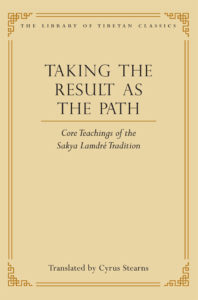 The tradition known as the Path with the Result, or Lamdré‚ is the most important tantric system of meditation practice and theory in the Sakya school of Tibetan Buddhism. This volume contains an unprecedented compilation of eleven vital works from different periods in the history of the Path with the Result in India and Tibet, including the Vajra Lines of the great Indian adept Virūpa (ca. seventh–eighth centuries), the basic text of the tradition. The collection also includes six writings by Jamyang Khyentsé Wangchuk (1524–68) and an instruction manual composed by the Fifth Dalai Lama (1617–62). None of the works in this book have ever been published before in any European language, and most of these writings traditionally have been considered secret. The present translation, an important new volume of the Library of Tibetan Classics, has been made with the personal approval and encouragement of His Holiness Sakya Trizin, head of the Sakya tradition. Students of the Lamdré will rejoice at the availability and lucidity of this major translation of key Sakya texts.
The tradition known as the Path with the Result, or Lamdré‚ is the most important tantric system of meditation practice and theory in the Sakya school of Tibetan Buddhism. This volume contains an unprecedented compilation of eleven vital works from different periods in the history of the Path with the Result in India and Tibet, including the Vajra Lines of the great Indian adept Virūpa (ca. seventh–eighth centuries), the basic text of the tradition. The collection also includes six writings by Jamyang Khyentsé Wangchuk (1524–68) and an instruction manual composed by the Fifth Dalai Lama (1617–62). None of the works in this book have ever been published before in any European language, and most of these writings traditionally have been considered secret. The present translation, an important new volume of the Library of Tibetan Classics, has been made with the personal approval and encouragement of His Holiness Sakya Trizin, head of the Sakya tradition. Students of the Lamdré will rejoice at the availability and lucidity of this major translation of key Sakya texts.
The Book of Kadam: The Core Texts
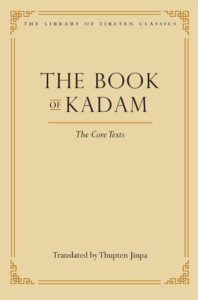 The Kadam school of Tibetan Buddhism emerged in the eleventh century from the teachings of the Indian master Atiśa and his principal Tibetan student, Dromtönpa. Although it no longer exists as an independent school, Kadam’s teachings were incorporated into the four major schools of Tibetan Buddhism and are still prized today for their unique practical application of the bodhisattva’s altruistic ideal in everyday life. One of the most cherished teachings stemming from Atiśa and Dromtönpa is the collection of esoteric oral transmissions enshrined in The Book of Kadam. This volume includes the core texts of the Book of Kadam, notably the twenty-three-chapter dialogue between Atiśa and Dromtönpa that is woven around Atiśa’s Bodhisattva’s Jewel Garland, as well as complementary texts that illuminate the history and practices of the Kadam tradition.
The Kadam school of Tibetan Buddhism emerged in the eleventh century from the teachings of the Indian master Atiśa and his principal Tibetan student, Dromtönpa. Although it no longer exists as an independent school, Kadam’s teachings were incorporated into the four major schools of Tibetan Buddhism and are still prized today for their unique practical application of the bodhisattva’s altruistic ideal in everyday life. One of the most cherished teachings stemming from Atiśa and Dromtönpa is the collection of esoteric oral transmissions enshrined in The Book of Kadam. This volume includes the core texts of the Book of Kadam, notably the twenty-three-chapter dialogue between Atiśa and Dromtönpa that is woven around Atiśa’s Bodhisattva’s Jewel Garland, as well as complementary texts that illuminate the history and practices of the Kadam tradition.
The Crystal Mirror of Philosophical Systems: A Tibetan Study of Asian Religious Thought
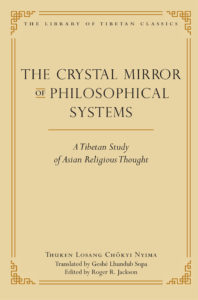 The Crystal Mirror of Philosophical Systems, by Thuken Losang Chökyi Nyima (1737–1802), is arguably the widest-ranging account of religious philosophies ever written in pre-modern Tibet. Like most Tibetan texts on philosophical systems, this work covers the major schools of India, both Buddhist and non-Buddhist, but then goes on to discuss in detail the entire range of Tibetan traditions as well, with separate chapters on the Nyingma, Kadam, Kagyü, Shijé, Sakya, Jonang, Geluk, and Bön schools. Not resting there, Thuken goes on to describe the major traditions of China—Confucian, Daoist, and the multiple varieties of Buddhist—as well as those of Mongolia, Khotan, and even Shambhala. The Crystal Mirror of Philosophical Systems is unusual, too, in its concern not just to describe and analyze doctrines, but to trace the historical development of the various traditions. The Crystal Mirror of Philosophical Systems is an eloquent and erudite presentation exploring the religious history and philosophical systems of an array of Asian Cultures—and offering evidence that the serious and sympathetic study of the history of religions has not been a monopoly of Western scholarship.
The Crystal Mirror of Philosophical Systems, by Thuken Losang Chökyi Nyima (1737–1802), is arguably the widest-ranging account of religious philosophies ever written in pre-modern Tibet. Like most Tibetan texts on philosophical systems, this work covers the major schools of India, both Buddhist and non-Buddhist, but then goes on to discuss in detail the entire range of Tibetan traditions as well, with separate chapters on the Nyingma, Kadam, Kagyü, Shijé, Sakya, Jonang, Geluk, and Bön schools. Not resting there, Thuken goes on to describe the major traditions of China—Confucian, Daoist, and the multiple varieties of Buddhist—as well as those of Mongolia, Khotan, and even Shambhala. The Crystal Mirror of Philosophical Systems is unusual, too, in its concern not just to describe and analyze doctrines, but to trace the historical development of the various traditions. The Crystal Mirror of Philosophical Systems is an eloquent and erudite presentation exploring the religious history and philosophical systems of an array of Asian Cultures—and offering evidence that the serious and sympathetic study of the history of religions has not been a monopoly of Western scholarship.
Mirror of Beryl: A Historical Introduction to Tibetan Medicine
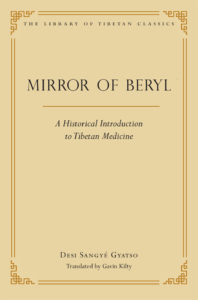 Composed while its author was the ruler of Tibet, Mirror of Beryl is a detailed account of the origins and history of medicine in Tibet through the end of the seventeenth century. Its author, Desi Sangyé Gyatso (1653–1705), was the heart disciple and political successor of the Great Fifth Dalai Lama and the author of several highly regarded works on Tibetan medicine, including his Blue Beryl, a commentary on the foundational text of Tibetan medicine, The Four Tantras. In the present historical introduction, Sangyé Gyatso traces the sources of influence on Tibetan medicine to classical India, China, Central Asia, and beyond, providing life stories, extensive references to earlier Tibetan works on medicine, and fascinating details about the Tibetan approach to healing. He also provides a commentary on the pratimoksha, bodhisattva, and tantric Buddhist vows. Desi Sangyé Gyatso’s Mirror of Beryl remains today an essential resource for students of medical science in Tibet.
Composed while its author was the ruler of Tibet, Mirror of Beryl is a detailed account of the origins and history of medicine in Tibet through the end of the seventeenth century. Its author, Desi Sangyé Gyatso (1653–1705), was the heart disciple and political successor of the Great Fifth Dalai Lama and the author of several highly regarded works on Tibetan medicine, including his Blue Beryl, a commentary on the foundational text of Tibetan medicine, The Four Tantras. In the present historical introduction, Sangyé Gyatso traces the sources of influence on Tibetan medicine to classical India, China, Central Asia, and beyond, providing life stories, extensive references to earlier Tibetan works on medicine, and fascinating details about the Tibetan approach to healing. He also provides a commentary on the pratimoksha, bodhisattva, and tantric Buddhist vows. Desi Sangyé Gyatso’s Mirror of Beryl remains today an essential resource for students of medical science in Tibet.
Mahāmudrā and Related Instructions: Core Teachings of the Kagyü Schools
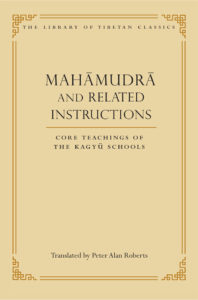 The Kagyü school of Tibetan Buddhism began in the eleventh century with such renowned figures as Marpa and Milarepa, and its seminal meditative traditions are Mahāmudrā and the six Dharmas of Nāropa. Mahāmudrā teachings focus on the cultivation of profound insight into the nature of the mind. The Mahāmudrā texts in this volume include a lucid work by the celebrated master Tselé Natsok Rangdröl and works by the twelfth-century master Shang Rinpoche, the great Third Karmapa, the Eighth Tai Situ, and Drukpa Pema Karpo. The volume also contains an inspirational work by Gampopa, the Drigung Kagyü root text, The Single Viewpoint, the Sixth Shamarpa’s guide to the six Dharmas of Nāropā, and finally an overview of tantric practice by Dakpo Tashi Namgyal, author of the famous Moonlight of Mahāmudrā. The texts in this volume were selected by the preeminent scholar of the Kagyü school, Khenchen Thrangu Rinpoche.
The Kagyü school of Tibetan Buddhism began in the eleventh century with such renowned figures as Marpa and Milarepa, and its seminal meditative traditions are Mahāmudrā and the six Dharmas of Nāropa. Mahāmudrā teachings focus on the cultivation of profound insight into the nature of the mind. The Mahāmudrā texts in this volume include a lucid work by the celebrated master Tselé Natsok Rangdröl and works by the twelfth-century master Shang Rinpoche, the great Third Karmapa, the Eighth Tai Situ, and Drukpa Pema Karpo. The volume also contains an inspirational work by Gampopa, the Drigung Kagyü root text, The Single Viewpoint, the Sixth Shamarpa’s guide to the six Dharmas of Nāropā, and finally an overview of tantric practice by Dakpo Tashi Namgyal, author of the famous Moonlight of Mahāmudrā. The texts in this volume were selected by the preeminent scholar of the Kagyü school, Khenchen Thrangu Rinpoche.
A Lamp to Illuminate the Five Stages: Teachings on Guhyasamāja Tantra
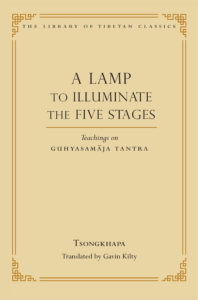 Tsongkhapa’s A Lamp to Illuminate the Five Stages (1419) is a comprehensive presentation of the highest yoga class of Buddhist tantra, especially the key practices—the so-called five stages (pancakrama)—of the advanced phase of Guhyasamāja tantra. Beginning with a thorough examination of the Indian sources, Tsongkhapa draws particularly from the writings of Nāgārjuna, Aryadeva, Candrakīrti, and Nāropā to develop a definitive understanding of the Vajrayana completion stage. Whereas in the generation stage, meditators visualize the Buddha in the form of the deity residing in a mandala palace, in the completion stage discussed in the present volume, meditators transcend ordinary consciousness and actualize the state of a buddha themselves. Among other things, Tsongkhapa’s work covers the subtle human physiology of channels and winds along with the process of dying, the bardo, and rebirth. This definitive statement on Guhyasamaja tantra profoundly affected the course of Buddhist practice in Tibet.
Tsongkhapa’s A Lamp to Illuminate the Five Stages (1419) is a comprehensive presentation of the highest yoga class of Buddhist tantra, especially the key practices—the so-called five stages (pancakrama)—of the advanced phase of Guhyasamāja tantra. Beginning with a thorough examination of the Indian sources, Tsongkhapa draws particularly from the writings of Nāgārjuna, Aryadeva, Candrakīrti, and Nāropā to develop a definitive understanding of the Vajrayana completion stage. Whereas in the generation stage, meditators visualize the Buddha in the form of the deity residing in a mandala palace, in the completion stage discussed in the present volume, meditators transcend ordinary consciousness and actualize the state of a buddha themselves. Among other things, Tsongkhapa’s work covers the subtle human physiology of channels and winds along with the process of dying, the bardo, and rebirth. This definitive statement on Guhyasamaja tantra profoundly affected the course of Buddhist practice in Tibet.
Stages of the Buddha’s Teachings: Three Key Texts
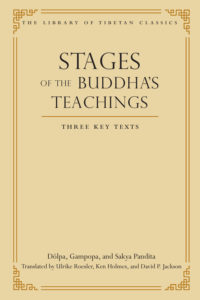 The “stages of the teachings” or tenrim genre of Tibetan spiritual writing expounds the Mahayana Buddhist teachings as a systematic progression, from the practices required at the start of the bodhisattva’s career to the final perfect awakening of buddhahood. The texts in the present volume each exerted seminal influence in the Tibetan Buddhist tradition. The first text, The Blue Compendium, presents the instructions of the Kadam teacher Potowa (1027/31–1105) as recorded by his student Dölpa (1059–1131). This verse work is followed by Gampopa’s (1079–1153) revered Ornament of Precious Liberation, which remains the most authoritative text on the path to enlightenment within the Kagyü school with its extensive quotations from the Indian scriptures. The final selection is Clarifying the Sage’s Intent, a masterwork by the preeminent sage of the Sakya tradition, Sakya Paṇḍita (1182–1251).
The “stages of the teachings” or tenrim genre of Tibetan spiritual writing expounds the Mahayana Buddhist teachings as a systematic progression, from the practices required at the start of the bodhisattva’s career to the final perfect awakening of buddhahood. The texts in the present volume each exerted seminal influence in the Tibetan Buddhist tradition. The first text, The Blue Compendium, presents the instructions of the Kadam teacher Potowa (1027/31–1105) as recorded by his student Dölpa (1059–1131). This verse work is followed by Gampopa’s (1079–1153) revered Ornament of Precious Liberation, which remains the most authoritative text on the path to enlightenment within the Kagyü school with its extensive quotations from the Indian scriptures. The final selection is Clarifying the Sage’s Intent, a masterwork by the preeminent sage of the Sakya tradition, Sakya Paṇḍita (1182–1251).
The Tibetan Book of Everyday Wisdom: A Thousand Years of Sage Advice
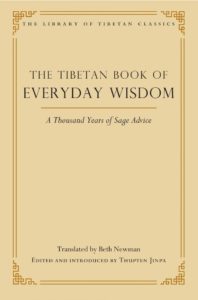 The Tibetan Book of Everyday Wisdom: A Thousand Years of Sage Advice presents a genre of Tibetan works known as “wise sayings” (lekshé). While most Tibetan literature focuses on the Buddhist path, wise sayings literature has traditionally been a centerpiece of secular education in Tibet and in the cultivation of social mores and an honorable way of life. Drawing inspiration from classical Indian literature on human virtue and governance (nitisastra), including the folktales in the Pañcatantra, the authors of these Tibetan works strove to educate young minds in the ways of the civilized world, especially by distinguishing the conduct of the wise from that of the foolish.
The Tibetan Book of Everyday Wisdom: A Thousand Years of Sage Advice presents a genre of Tibetan works known as “wise sayings” (lekshé). While most Tibetan literature focuses on the Buddhist path, wise sayings literature has traditionally been a centerpiece of secular education in Tibet and in the cultivation of social mores and an honorable way of life. Drawing inspiration from classical Indian literature on human virtue and governance (nitisastra), including the folktales in the Pañcatantra, the authors of these Tibetan works strove to educate young minds in the ways of the civilized world, especially by distinguishing the conduct of the wise from that of the foolish.
This anthology includes some of the best-loved classics of Tibetan literature, such as Sakya Pandita’s Jewel Treasury of Wise Sayings, Panchen Sönam Drakpa’s Ganden Wise Sayings, and Gungthang’s Treatise on Trees and Treatise on Water. The final work is the intriguing Kaché Phalu’s Advice. Ostensibly written by a wise Tibetan Muslim, this versified text enjoys great popularity within Tibetan-speaking communities, such that many Tibetans are able to recite at least a few verses from memory.
Ornament of Abhidharma: A Commentary on Vasubandhu’s Abhidharmakośa
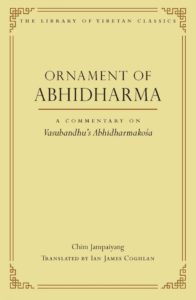 This work by a scholar of the Kadam school is the most authoritative Tibetan commentary on Vasubandhu’s Treasury of Abhidharma (Abhidharmakośa). In terms of stature and authority, Vasubandhu’s Treasury rivals Buddhaghosa’s contemporaneous Path of Purification and deals with such central themes as the dynamics of emotions and karma, of mental and meditative states; it treats both the cosmos and the life within. Chim Jampaiyang’s exposition of it is the greatest flowering of Abhidharma studies in Tibet. Usually referred to as the Chimzö, it is to this day a key textbook in the great monastic universities. A veritable encyclopedia, it spans all areas of classical Indian Buddhist knowledge and is an indispensable reference for scholars of Buddhism.
This work by a scholar of the Kadam school is the most authoritative Tibetan commentary on Vasubandhu’s Treasury of Abhidharma (Abhidharmakośa). In terms of stature and authority, Vasubandhu’s Treasury rivals Buddhaghosa’s contemporaneous Path of Purification and deals with such central themes as the dynamics of emotions and karma, of mental and meditative states; it treats both the cosmos and the life within. Chim Jampaiyang’s exposition of it is the greatest flowering of Abhidharma studies in Tibet. Usually referred to as the Chimzö, it is to this day a key textbook in the great monastic universities. A veritable encyclopedia, it spans all areas of classical Indian Buddhist knowledge and is an indispensable reference for scholars of Buddhism.
Tales from the Tibetan Operas
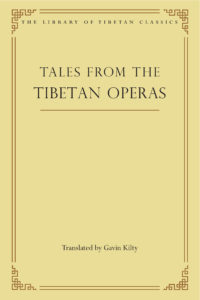 In Tales from the Tibetan Operas, timeless Buddhist ideas are brought to life through enchanting myths and vivid stories. Poetically vibrant, these eight classic lhamo stories have continued to delight and edify Tibetan audiences of all backgrounds, from village children to learned scholar-monks and Dalai Lamas.
In Tales from the Tibetan Operas, timeless Buddhist ideas are brought to life through enchanting myths and vivid stories. Poetically vibrant, these eight classic lhamo stories have continued to delight and edify Tibetan audiences of all backgrounds, from village children to learned scholar-monks and Dalai Lamas.
Western readers can now get a glimpse into ancient Indian and Tibetan mythology through the cultural touchstone of eight classic lhamo stories. On visual display are the human and nonhuman characters of history and folklore — kings, queens, conniving ministers, ordinary folk, yogis, monks, and powerful beings from other realms such as gods and nāgas — engaged in plotting, kidnapping, fighting, journeys to faraway lands, separation, and reconciliation, often with a quest for seemingly impossible treasure. The suspenseful tales have many dramatic plot twists, but they all end in happiness, where the good achieve their goals and the bad receive their just desserts. The operas thus bring to the people the fundamental ethical laws of behavior and teachings of natural justice based on Buddhist doctrine.
The book features more than 50 gorgeous photos of the operas performed on location in Tibet and India.
Beautiful Adornment of Mount Meru: A Presentation of Classical Indian Philosophy
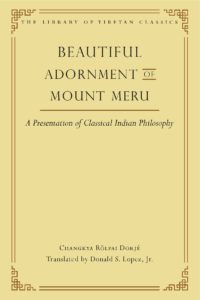 The lucid literary style of Beautiful Adornment of Mount Meru has made it a classic in the study of Indian philosophical thought, both in Tibetan monasteries and contemporary academic circles.
The lucid literary style of Beautiful Adornment of Mount Meru has made it a classic in the study of Indian philosophical thought, both in Tibetan monasteries and contemporary academic circles.
Beautiful Adornment of Mount Meru is a work of doxography, presenting the distinctive philosophical tenets of the Indian Buddhist and non-Buddhist schools in a systematic manner that ascends through increasingly more subtle views. It is a Tibetan corollary to contemporary histories of philosophy. The “Mount Meru” of the title is the Buddha’s teachings, and Changkya’s work excels in particular in its treatment of the two Mahayana Buddhist schools, the Yogācāra (here called the Vijñaptimātra) and the Madhyamaka. Beautiful Adornment is often praised for the clarity of its prose and its economical use of citations from Indian texts. It skillfully examines core philosophical issues, supplemented with several intriguing ancillary discussions, and draws heavily on the works of Tsongkhapa and his disciples in the Geluk tradition he founded.
Four Tibetan Lineages
 Drawing primarily from the Pacification, Severance, Shangpa Kagyü, and Bodongpa traditions, Four Tibetan Lineages presents some of Tibet’s most transformative yet lesser-known teachings on meditative practice. Most works in this volume are drawn from a Tibetan anthology known as the Treasury of Precious Instructions compiled by Jamgön Kongtrul Lodrö Thayé (1813–1900). A vast preservation project, this anthology reflects Kongtrul’s attempt to rescue rare teachings from disappearing. By foregrounding the teachings of masters like Khedrup Khyungpo Naljor (d. 1135), Dampa Sangyé (d. 1117), Machik Labdrön (1031/55–1126/50), Jonang Tāranātha (1575–1634), and Jamyang Khyentsé Wangpo (1820–92), this volume extends Jamgön Kongtrul’s preservation efforts into the modern world.
Drawing primarily from the Pacification, Severance, Shangpa Kagyü, and Bodongpa traditions, Four Tibetan Lineages presents some of Tibet’s most transformative yet lesser-known teachings on meditative practice. Most works in this volume are drawn from a Tibetan anthology known as the Treasury of Precious Instructions compiled by Jamgön Kongtrul Lodrö Thayé (1813–1900). A vast preservation project, this anthology reflects Kongtrul’s attempt to rescue rare teachings from disappearing. By foregrounding the teachings of masters like Khedrup Khyungpo Naljor (d. 1135), Dampa Sangyé (d. 1117), Machik Labdrön (1031/55–1126/50), Jonang Tāranātha (1575–1634), and Jamyang Khyentsé Wangpo (1820–92), this volume extends Jamgön Kongtrul’s preservation efforts into the modern world.
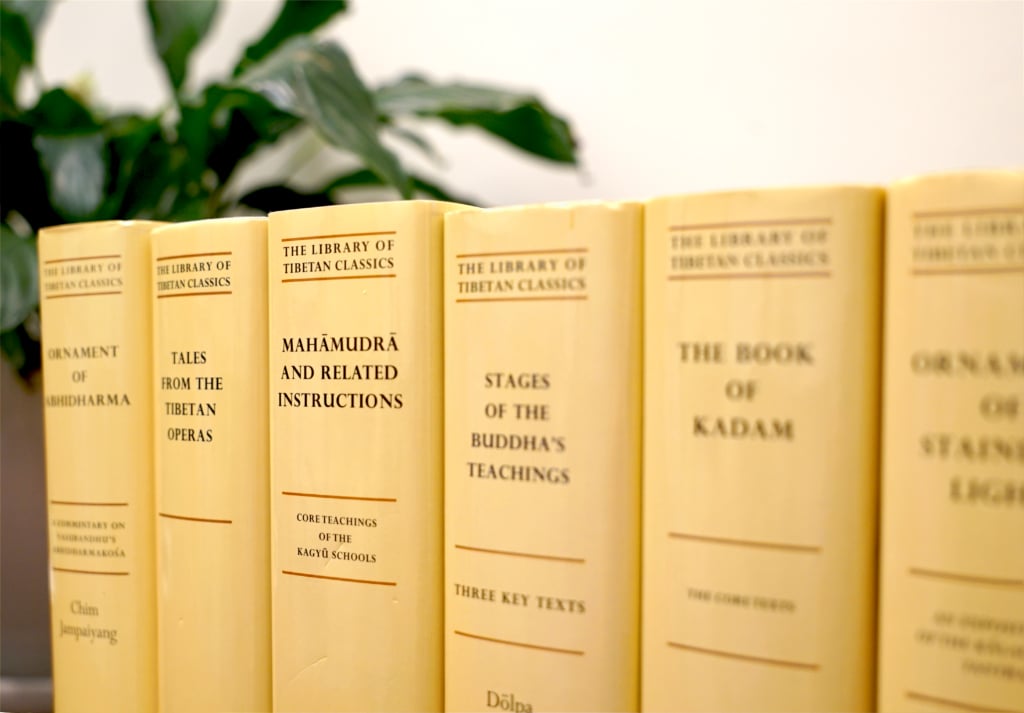
The Complete Series
Following is a list of the thirty-two proposed volumes in The Library of Tibetan Classics. Some volumes are translations of single texts, while others are compilations of multiple texts, and each volume will be roughly the same length. Except for those volumes already published, the renderings of titles below are tentative and liable to change. The Institute of Tibetan Classics has contracted numerous established translators in its efforts, and work is progressing on all volumes concurrently.
1. Mind Training: The Great Collection, compiled by Shönu Gyalchok and Könchok Gyaltsen (fifteenth century) NOW AVAILABLE
2. The Book of Kadam: The Core Texts, attributed to Atiśa and Drom- tönpa (eleventh century) NOW AVAILABLE
3. The Great Chariot: A Treatise on the Great Perfection, Longchen Rap- jampa (1308–63)
4. Taking the Result As the Path: Core Teachings of the Sakya Lamdré Tradition, Jamyang Khyentsé Wangchuk (1524–68) et NOW AVAILABLE
5. Mahāmudrā and Related Instructions: Core Teachings of the Kagyü Schools NOW AVAILABLE
6. Stages of the Path and the Oral Transmission: Selected Teachings of the Geluk School NOW AVAILABLE
7. Ocean of Definitive Meaning: A Teaching for the Mountain Hermit, Dölpopa Sherap Gyaltsen (1292–1361)
8. Four Tibetan Lineages: Core Teachings of Pacification, Severance, Shangpa Kagyü, and Bodong, Jamgön Kongtrül (1813–90) NOW AVAILABLE
9. The Tradition of Everlasting Bön: Five Key Texts on Scripture, Tantra, and the Great Perfection NOW AVAILABLE
10. Stages of the Buddha’s Teachings: Three Key Texts NOW AVAILABLE
11. The Bodhisattva’s Altruistic Ideal: Selected Key Texts
12. The Ethics of the Three Codes
13. Sādhanas: Vajrayana Buddhist Meditation Manuals
14. Ornament of Stainless Light: An Exposition of the Kālacakra Tantra, Khedrup Norsang Gyatso (1423–1513) NOW AVAILABLE
15. A Lamp to Illuminate the Five Stages: Teachings on the Guhyasamāja Tantra, Tsongkhapa (1357–1419) NOW AVAILABLE
16. Studies in the Perfection of Wisdom
17. Treatises on Buddha Nature
18. Differentiations of the Profound View: Interpretations of Emptiness in Tibet
19. Illuminating the Intent: An Exposition of Candrakīrti’s Entering the Middle Way, Tsongkhapa (1357–1419) NOW AVAILABLE
20. Tibetan Buddhist Epistemology I: The Sakya School
21.Tibetan Buddhist Epistemology II: The Geluk School
22. Tibetan Buddhist Psychology and Phenomenology: Selected Texts
23. Ornament of Abhidharma: A Commentary on Vasubandhu’s Abhidharmakośa, Chim Jampaiyang (thirteenth century) NOW AVAILABLE
24. Beautiful Adornment of Mount Meru: A Presentation of Classical Indian Philosophy, Changkya Rölpai Dorjé (1717–86) NOW AVAILABLE
25. The Crystal Mirror of Philosophical Systems: A Tibetan Study of Asian Religious Thought, Thuken Losang Chökyi Nyima (1737–1802) NOW AVAILABLE
26. Gateway for Being Learned and Realized: Selected Texts
27. The Tibetan Book of Everyday Wisdom: A Thousand Years of Sage Advice NOW AVAILABLE
28. Mirror of Beryl: A Historical Introduction to Tibetan Medicine, Desi Sangyé Gyatso (1653–1705) NOW AVAILABLE
29. Selected Texts on Tibetan Astronomy and Astrology
30. Art and Literature: An Anthology
31. Tales from the Tibetan Operas NOW AVAILABLE
32. A History of Buddhism in India and Tibet, Khepa Deu (thirteenth century) NOW AVAILABLE
Meet the Authors & Translators
 Ian James Coghlan (Jampa Ignyen) was a monk in the Tibetan Buddhist tradition for twenty years and completed his geshe studies at Sera Je Monastery in 1995. He holds a PhD in Asian studies from La Trobe University and is currently a translator for the Institute of Tibetan Classics and an adjunct research fellow at Monash Asia Institute, Melbourne.
Ian James Coghlan (Jampa Ignyen) was a monk in the Tibetan Buddhist tradition for twenty years and completed his geshe studies at Sera Je Monastery in 1995. He holds a PhD in Asian studies from La Trobe University and is currently a translator for the Institute of Tibetan Classics and an adjunct research fellow at Monash Asia Institute, Melbourne.
Dölpa “Dölpa was a prominent transmitter of the Kadam teachings, is known by several names, including Dölpa Marshurwa, Sherap Gyatso, and simply ‘Spiritual mentor of Döl’ (Geshé Dölpa), after his home region. After studying with a number of teachers, he met the highly influential Kadampa master Potowa Rinchen Sal (1027/31–1105) and stayed with him for twenty-two years. In later years Geshé Dölpa founded his own monastery of Yangang in Döl. The chronicles mention that he had more than a thousand disciples, including the famous Kagyü hierarch Phakmodrupa Dorjé Gyalpo (1110–70).”
—from Stages of the Buddha’s Teachings
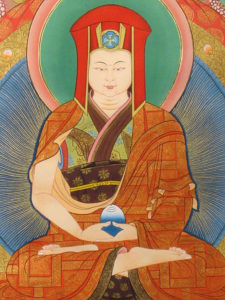 Gampopa “Gampopa, who was also known as Dakpo Rinpoché, was born in 1079 in Dakpo district of central Tibet. He originally trained to be a physician; hence the other common title he is known by, Dakpo Lhajé (“Doctor of Dakpo”). He began his adult life as a married layman and only began intensive religious practice after experiencing the shock of his beloved wife’s sudden death when he was still in his early twenties (ca. 1100). He eventually became one of the foremost disciples of the venerable Milarepa (1040–1123), but only after extensive studies in other traditions. Before meeting Milarepa, he had received full monastic ordination at the age of twenty-five (1104) and had sought out tantric initiations in Lower Dakpo from the master Maryul Loden. He had also studied intensively in Phenyul under masters of the Kadam tradition such as Jayulpa, Nyukrumpa, and Chakri Gongkhawa. Jayulpa (or Jayulwa) Shönu Ö (1075–1138) was a student of Chengawa (one of the above-mentioned “three spiritual brothers,” along with Potowa, who were Dromtönpa’s principal students), and Nyukrumpa was in the lineage of Geshé Naljorpa Chenpo (1015–78). Gampopa sought out Milarepa only later, finally receiving the key instructions from him (especially on “inner heat,” gtum mo) for thirteen months in 1110–11. After meditating for an additional three years, he attained awakening. He tried to return to see his master Milarepa twelve years later (1123), but the master had already passed away. He continued a primarily contemplative life for some years but then began his career as spiritual teacher, which became more and more illustrious with each passing year. Gampopa established the first Kagyü monastery, Daklha Gampo, which attracted a multitude of disciples during his lifetime. It is not for nothing that virtually the entire Kagyü lineage in Tibet calls itself the Dakpo Kagyü (literally, “teaching lineage of Dakpo”) in his honor. Through him, a discrete lineage composed of a series of secret tantric traditions from India, and limited to a handful of advanced followers, became integrated with the main elements of basic and Mahayana Buddhism, forming the broad and accessible basis of the Kagyü teaching tradition as it is today. This broad-spectrum Buddhism was then nurtured by his four main disciples, and in particular by the Karmapa lineage of reincarnations.”
Gampopa “Gampopa, who was also known as Dakpo Rinpoché, was born in 1079 in Dakpo district of central Tibet. He originally trained to be a physician; hence the other common title he is known by, Dakpo Lhajé (“Doctor of Dakpo”). He began his adult life as a married layman and only began intensive religious practice after experiencing the shock of his beloved wife’s sudden death when he was still in his early twenties (ca. 1100). He eventually became one of the foremost disciples of the venerable Milarepa (1040–1123), but only after extensive studies in other traditions. Before meeting Milarepa, he had received full monastic ordination at the age of twenty-five (1104) and had sought out tantric initiations in Lower Dakpo from the master Maryul Loden. He had also studied intensively in Phenyul under masters of the Kadam tradition such as Jayulpa, Nyukrumpa, and Chakri Gongkhawa. Jayulpa (or Jayulwa) Shönu Ö (1075–1138) was a student of Chengawa (one of the above-mentioned “three spiritual brothers,” along with Potowa, who were Dromtönpa’s principal students), and Nyukrumpa was in the lineage of Geshé Naljorpa Chenpo (1015–78). Gampopa sought out Milarepa only later, finally receiving the key instructions from him (especially on “inner heat,” gtum mo) for thirteen months in 1110–11. After meditating for an additional three years, he attained awakening. He tried to return to see his master Milarepa twelve years later (1123), but the master had already passed away. He continued a primarily contemplative life for some years but then began his career as spiritual teacher, which became more and more illustrious with each passing year. Gampopa established the first Kagyü monastery, Daklha Gampo, which attracted a multitude of disciples during his lifetime. It is not for nothing that virtually the entire Kagyü lineage in Tibet calls itself the Dakpo Kagyü (literally, “teaching lineage of Dakpo”) in his honor. Through him, a discrete lineage composed of a series of secret tantric traditions from India, and limited to a handful of advanced followers, became integrated with the main elements of basic and Mahayana Buddhism, forming the broad and accessible basis of the Kagyü teaching tradition as it is today. This broad-spectrum Buddhism was then nurtured by his four main disciples, and in particular by the Karmapa lineage of reincarnations.”
—from Stages of the Buddha’s Teachings
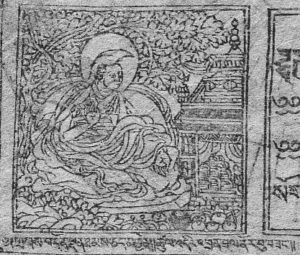 Khedrup Norsang Gyatso Khedrup (1423–1513), a well-known scholar and adept of the fifteenth century, was a student of the First Dalai Lama and a principal teacher of the Second Dalai Lama. Though belonging to the Geluk school of Tibetan Buddhism, Norsang Gyatso is recognized as a seminal figure in the promotion of a syncretic approach—between the Geluk and Kagyü schools—to the teachings and practices of mahamudra. Along with Phukpa Lhundrup Gyatso, Norsang Gyatso is credited also with the founding of the highly influential Phuk school of Tibetan astronomy and astrology. Because of his dedication to intensive meditative practice for more than four decades as a wandering hermit, Norsang Gyatso came to be revered by the Tibetan tradition as a great meditator and teacher, and he is included among the lineage masters of many important practice traditions, including the lineage of Kalachakra.
Khedrup Norsang Gyatso Khedrup (1423–1513), a well-known scholar and adept of the fifteenth century, was a student of the First Dalai Lama and a principal teacher of the Second Dalai Lama. Though belonging to the Geluk school of Tibetan Buddhism, Norsang Gyatso is recognized as a seminal figure in the promotion of a syncretic approach—between the Geluk and Kagyü schools—to the teachings and practices of mahamudra. Along with Phukpa Lhundrup Gyatso, Norsang Gyatso is credited also with the founding of the highly influential Phuk school of Tibetan astronomy and astrology. Because of his dedication to intensive meditative practice for more than four decades as a wandering hermit, Norsang Gyatso came to be revered by the Tibetan tradition as a great meditator and teacher, and he is included among the lineage masters of many important practice traditions, including the lineage of Kalachakra.
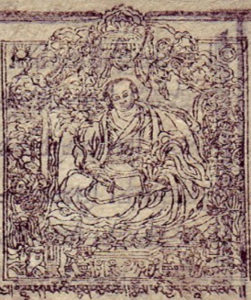 Desi Sangyé Gyatso (1653–1705), the heart disciple of the Fifth Dalai Lama, became the ruler of Tibet at age twenty-six and held sway over the country for over twenty-five years before his tragic death in a power struggle with the Mongol chieftain Lhasang Khan. A layman his entire life, he was a thorough administrator, overhauling the structure and regulations of the major Geluk monasteries and setting up many new institutions, such as the renowned Tibetan Medical Institute in Lhasa. He famously commissioned a set of seventy-nine medical paintings, and he composed White Beryl, an authoritative work on all aspects of astronomical calculation and divination practiced in Tibet at his time.
Desi Sangyé Gyatso (1653–1705), the heart disciple of the Fifth Dalai Lama, became the ruler of Tibet at age twenty-six and held sway over the country for over twenty-five years before his tragic death in a power struggle with the Mongol chieftain Lhasang Khan. A layman his entire life, he was a thorough administrator, overhauling the structure and regulations of the major Geluk monasteries and setting up many new institutions, such as the renowned Tibetan Medical Institute in Lhasa. He famously commissioned a set of seventy-nine medical paintings, and he composed White Beryl, an authoritative work on all aspects of astronomical calculation and divination practiced in Tibet at his time.
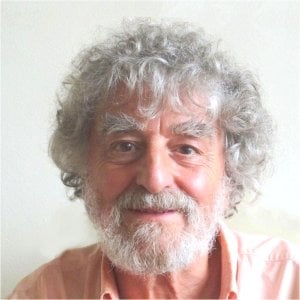 Ken Holmes studied Tibetan Buddhism in Dharamsala, India, before joining Samye Ling in Scotland, the first Tibetan monastery in the West, in 1970. As the center’s director of studies, Ken spends much of the year teaching at Samye Ling’s branches in Europe and Africa. Previous publications include Maitreya on Buddha Nature, Karmapa, and the novel Tibet or Not Tibet.
Ken Holmes studied Tibetan Buddhism in Dharamsala, India, before joining Samye Ling in Scotland, the first Tibetan monastery in the West, in 1970. As the center’s director of studies, Ken spends much of the year teaching at Samye Ling’s branches in Europe and Africa. Previous publications include Maitreya on Buddha Nature, Karmapa, and the novel Tibet or Not Tibet.
 David P. Jackson received his doctorate in 1985 from the University of Washington and studied and translatedfor many years in Seattle for the polymath Tibetan scholar Dezhung Rinpoche. Until 2007, he was a professor of Tibetan Studies at Hamburg University in Germany and is now a curator for Rubin Museum of Art, New York. He is the author of numerous articles and books on Tibetan art, literature, and history, including A Saint in Seattle, Tibetan Thangka Painting, The Mollas of Mustang, and Enlightenment by a Single Means. He lives in Washington State.
David P. Jackson received his doctorate in 1985 from the University of Washington and studied and translatedfor many years in Seattle for the polymath Tibetan scholar Dezhung Rinpoche. Until 2007, he was a professor of Tibetan Studies at Hamburg University in Germany and is now a curator for Rubin Museum of Art, New York. He is the author of numerous articles and books on Tibetan art, literature, and history, including A Saint in Seattle, Tibetan Thangka Painting, The Mollas of Mustang, and Enlightenment by a Single Means. He lives in Washington State.
 Roger Jackson is the John W. Nason Professor of Asian Studies and Religion at Carleton College in Minnesota, where he teaches the religions of South Asia and Tibet. He has published many articles on the philosophy, ritual, meditative practices, and poetry of Indian and Tibetan Buddhism, and has written or co-edited several books, including Is Enlightenment Possible?, Tibetan Literature, Buddhist Theology, Tantric Treasures, and Mahāmudrā and the Bka’ brgyud Tradition. He is a past editor of the Journal of the International Association of Buddhist Studies, and is currently co-editor of the Indian International Journal of Buddhist Studies.
Roger Jackson is the John W. Nason Professor of Asian Studies and Religion at Carleton College in Minnesota, where he teaches the religions of South Asia and Tibet. He has published many articles on the philosophy, ritual, meditative practices, and poetry of Indian and Tibetan Buddhism, and has written or co-edited several books, including Is Enlightenment Possible?, Tibetan Literature, Buddhist Theology, Tantric Treasures, and Mahāmudrā and the Bka’ brgyud Tradition. He is a past editor of the Journal of the International Association of Buddhist Studies, and is currently co-editor of the Indian International Journal of Buddhist Studies.
Thupten Jinpa was educated in the classical Tibetan monastic academia and received the highest academic degree of Geshe Lharam (equivalent to a doctorate in divinity). Jinpa also holds a BA in philosophy and a PhD in religious studies, both from the University of Cambridge, England. Since 1985, he has been the principal translator to the Dalai Lama, accompanying him to the Unit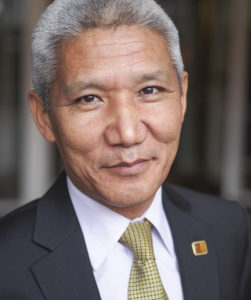 ed States, Canada, and Europe. He has translated and edited many books by the Dalai Lama, including The World of Tibetan Buddhism, Essence of the Heart Sutra, and the New York Times bestseller Ethics for the New Millennium.
ed States, Canada, and Europe. He has translated and edited many books by the Dalai Lama, including The World of Tibetan Buddhism, Essence of the Heart Sutra, and the New York Times bestseller Ethics for the New Millennium.
Jinpa has published scholarly articles on various aspects of Tibetan culture, Buddhism, and philosophy, and books such as Songs of Spiritual Experience: Tibetan Poems of Awakening and Insight (co-authored) and Self, Reality and Reason in Tibetan Thought. He serves on the advisory board of numerous educational and cultural organizations in North America, Europe, and India. He is currently the president and the editor-in-chief of the Institute of Tibetan Classics, a nonprofit educational organization dedicated to translating key Tibetan classics into contemporary languages. And he also currently chairs the Mind and Life Institute and the Compassion Institute.
Tsongkhapa (1357–1419) was one of the finest scholar-practitioners in Tibetan Buddhism. Renowned for both his written works and his meditative accomplishments, he founded the Gelug school, which produced the lineage of the Dalai Lamas.
Gavin Kilty has been a full-time translator for the Institute of Tibetan Classics since 2001. Before that he lived in Dharamsala, India, for fourteen years, where he spent eight years training in the traditional Geluk monastic curriculum through the medium of class and debate at the Institute of Buddhist Dialectics. He also teaches Tibetan language courses in India, Nepal, and elsewhere, and is a translation reviewer for the organization 84000, Translating the Words of the Buddha.
 Donald S. Lopez is the Arthur E. Link Distinguished University Professor of Buddhist and Tibetan Studies in the Department of Asian Languages and Cultures at the University of Michigan. He is the author and translator of numerous books, including Beautiful Adornment of Mount Meru, Opening the Eye of New Awareness, and In the Forest of Faded Wisdom: 104 Poems by Gendun Chopel (University of Chicago 2009).
Donald S. Lopez is the Arthur E. Link Distinguished University Professor of Buddhist and Tibetan Studies in the Department of Asian Languages and Cultures at the University of Michigan. He is the author and translator of numerous books, including Beautiful Adornment of Mount Meru, Opening the Eye of New Awareness, and In the Forest of Faded Wisdom: 104 Poems by Gendun Chopel (University of Chicago 2009).
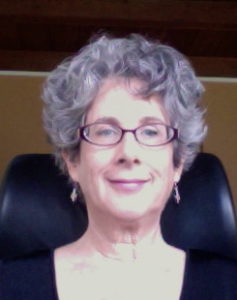 Beth Newman received her PhD in South Asian Languages and Literature from the University of Wisconsin-Madison. She teaches at Ringling School of Art and Design in Sarasota, Florida, and is the translator of The Tale of the Incomparable Prince.
Beth Newman received her PhD in South Asian Languages and Literature from the University of Wisconsin-Madison. She teaches at Ringling School of Art and Design in Sarasota, Florida, and is the translator of The Tale of the Incomparable Prince.
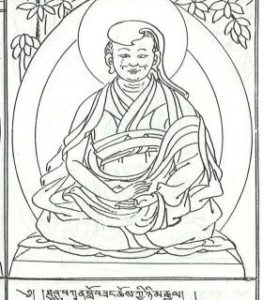 Thuken Losang Chökyi Nyima (1737–1802) was among the most cosmopolitan and prolific Tibetan Buddhist masters of the late eighteenth century. Hailing from the “melting pot” region of Amdo, he was Mongol by heritage, and educated in Gelukpa monasteries. Throughout his life, he traveled widely in east and inner Asia, spending significant time in Central Tibet, Amdo, inner Mongolia, and at the Qing court in Beijing. He served as abbot of several important monasteries, and wrote hundreds of texts on Buddhist thought and practice, the most enduring and influential of which is the Crystal Mirror of Philosophical Systems.
Thuken Losang Chökyi Nyima (1737–1802) was among the most cosmopolitan and prolific Tibetan Buddhist masters of the late eighteenth century. Hailing from the “melting pot” region of Amdo, he was Mongol by heritage, and educated in Gelukpa monasteries. Throughout his life, he traveled widely in east and inner Asia, spending significant time in Central Tibet, Amdo, inner Mongolia, and at the Qing court in Beijing. He served as abbot of several important monasteries, and wrote hundreds of texts on Buddhist thought and practice, the most enduring and influential of which is the Crystal Mirror of Philosophical Systems.
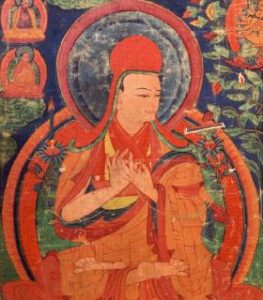 Sakya Pandita Kunga Gyaltsen (1182–1251) was a renowned scholar and Tibetan statesman who staved off a Mongolian invasion by converting Emperor Godan Khan to Buddhism. A luminary of the Sakya school of Tibetan Buddhism, his peerless erudition stands out even among a tradition known for its scholastic adepts, and many of his works have been bedrock texts for study and practice since the thirteenth century.
Sakya Pandita Kunga Gyaltsen (1182–1251) was a renowned scholar and Tibetan statesman who staved off a Mongolian invasion by converting Emperor Godan Khan to Buddhism. A luminary of the Sakya school of Tibetan Buddhism, his peerless erudition stands out even among a tradition known for its scholastic adepts, and many of his works have been bedrock texts for study and practice since the thirteenth century.
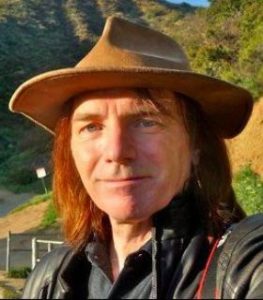 Peter Alan Roberts was born in Wales and lives in Hollywood, California. He earned a BA in Sanskrit and Pali and a DPhil in Tibetan Studies from Oxford University (Harris-Manchester College). For more than thirty years he has been working as an interpreter for lamas and as a translator of Tibetan texts. He specializes in the literature of the Kagyü and Nyingma traditions with a focus on tantric practices, and he is the author of The Biographies of Rechungpa.
Peter Alan Roberts was born in Wales and lives in Hollywood, California. He earned a BA in Sanskrit and Pali and a DPhil in Tibetan Studies from Oxford University (Harris-Manchester College). For more than thirty years he has been working as an interpreter for lamas and as a translator of Tibetan texts. He specializes in the literature of the Kagyü and Nyingma traditions with a focus on tantric practices, and he is the author of The Biographies of Rechungpa.
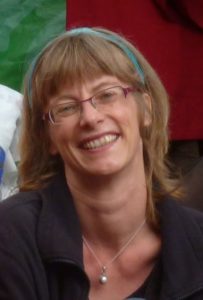 Ulrike Roesler Ulrike Roesler teaches Indian studies at the University of Freiburg in Germany and specializes in the history of the Tibetan Kadampa tradition.
Ulrike Roesler Ulrike Roesler teaches Indian studies at the University of Freiburg in Germany and specializes in the history of the Tibetan Kadampa tradition.
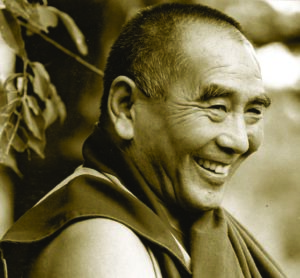 Geshe Lhundub Sopa Born in the Tsang region of Tibet in 1923, Geshe Lhundub Sopa was both a spiritual master and a respected academic. He rose from a humble background to complete his geshe studies at Sera Je Monastic University in Lhasa with highest honors and was privileged to serve as a debate opponent for the Dalai Lama’s own geshe examination in 1959. He moved to New Jersey in the United States in 1963 and in 1967 began teaching in the Buddhist Studies Program at University of Wisconsin–Madison, where he professor emeritus. In 1975, he founded the Deer Park Buddhist Center in Oregon, Wisconsin, site of the Dalai Lama’s first Kalachakra initiation granted in the West. He is the author of several books in English, including the five-volume comprehensive teaching, Steps on the Path to Enlightenment.
Geshe Lhundub Sopa Born in the Tsang region of Tibet in 1923, Geshe Lhundub Sopa was both a spiritual master and a respected academic. He rose from a humble background to complete his geshe studies at Sera Je Monastic University in Lhasa with highest honors and was privileged to serve as a debate opponent for the Dalai Lama’s own geshe examination in 1959. He moved to New Jersey in the United States in 1963 and in 1967 began teaching in the Buddhist Studies Program at University of Wisconsin–Madison, where he professor emeritus. In 1975, he founded the Deer Park Buddhist Center in Oregon, Wisconsin, site of the Dalai Lama’s first Kalachakra initiation granted in the West. He is the author of several books in English, including the five-volume comprehensive teaching, Steps on the Path to Enlightenment.
 Cyrus Stearns first began to study Buddhism with Dezhung Rinpoche (1906–87) in 1973. Since that time he has studied with and translated for many Tibetan teachers, especially Dezhung Rinpoche and Chogye Trichen Rinpoche. Cyrus has a PhD in Buddhist Studies from the University of Washington and lived for about eight years in Nepal, India, and Southeast Asia. Among his other publications are The Buddha from Dolpo, Hermit of Go Cliffs, and Luminous Lives. Cyrus has three daughters and lives on Whidbey Island, Washington.
Cyrus Stearns first began to study Buddhism with Dezhung Rinpoche (1906–87) in 1973. Since that time he has studied with and translated for many Tibetan teachers, especially Dezhung Rinpoche and Chogye Trichen Rinpoche. Cyrus has a PhD in Buddhist Studies from the University of Washington and lived for about eight years in Nepal, India, and Southeast Asia. Among his other publications are The Buddha from Dolpo, Hermit of Go Cliffs, and Luminous Lives. Cyrus has three daughters and lives on Whidbey Island, Washington.

